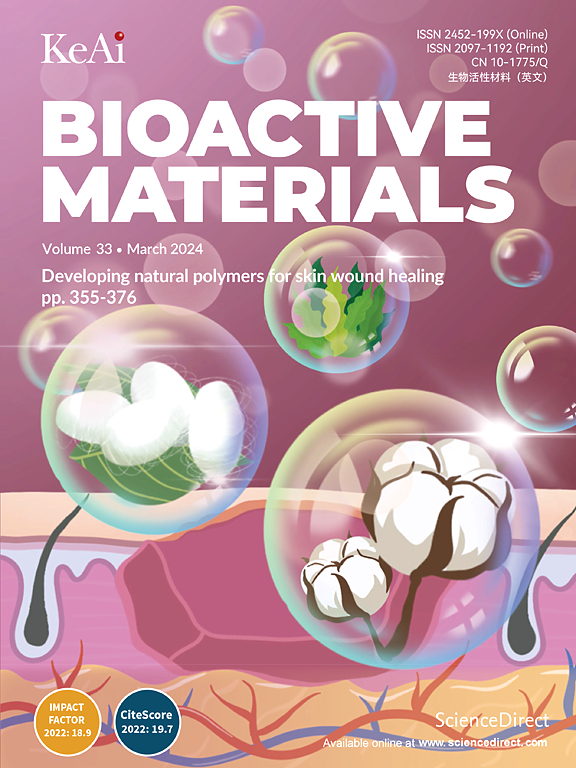TClC effectively suppresses the growth and metastasis of NSCLC via polypharmacology
IF 18
1区 医学
Q1 ENGINEERING, BIOMEDICAL
引用次数: 0
Abstract
Despite significant advances in targeted therapies and immunotherapies, non-small cell lung cancer (NSCLC) continues to present a global health challenge, with a modest five-year survival rate of 28 %, largely due to the emergence of treatment-resistant and metastatic tumors. In response, we synthesized a novel bioactive compound, ethyl 6-chlorocoumarin-3-carboxylyl L-theanine (TClC), which significantly inhibited NSCLC growth, epithelial mesenchymal transition (EMT), migration, and invasion in vitro and tumor growth and metastasis in vivo without inducing toxicity. TClC disrupts autocrine loops that promote tumor progression, particularly in stem-like CD133-positive NSCLC (CD133+ LC) cells, which are pivotal in tumor metastasis. Through targeted molecular assays, we identified direct binding targets of TClC, including Akt, NF-κB, β-catenin, EZH2, and PD-L1. This interaction not only suppresses the expression of oncogenic factors and cancer stem cell markers but also downregulates the expression of a multidrug resistance transporter, underscoring the compound's polypharmacological potential. These results position TClC as a promising candidate for NSCLC treatment, signaling a new era in the development of cancer therapies that directly target multiple critical cancer pathways.

TClC通过多种药理作用有效抑制非小细胞肺癌的生长和转移。
尽管靶向治疗和免疫治疗取得了重大进展,但非小细胞肺癌(NSCLC)仍然是全球健康的挑战,其5年生存率为28%,主要是由于治疗耐药和转移性肿瘤的出现。为此,我们合成了一种新的生物活性化合物——乙基6-氯香豆素-3-羧基l -茶氨酸(TClC),该化合物在体外显著抑制非小细胞肺癌的生长、上皮间质转化(EMT)、迁移和侵袭以及体内肿瘤的生长和转移,且不产生毒性。TClC破坏促进肿瘤进展的自分泌环,特别是在干细胞样CD133阳性非小细胞肺癌(CD133+ LC)细胞中,这是肿瘤转移的关键。通过靶向分子检测,我们确定了TClC的直接结合靶点,包括Akt、NF-κB、β-catenin、EZH2和PD-L1。这种相互作用不仅抑制了致癌因子和癌症干细胞标记物的表达,还下调了多药耐药转运体的表达,强调了该化合物的多药理潜力。这些结果将TClC定位为NSCLC治疗的有希望的候选者,标志着直接靶向多种关键癌症途径的癌症治疗发展的新时代。
本文章由计算机程序翻译,如有差异,请以英文原文为准。
求助全文
约1分钟内获得全文
求助全文
来源期刊

Bioactive Materials
Biochemistry, Genetics and Molecular Biology-Biotechnology
CiteScore
28.00
自引率
6.30%
发文量
436
审稿时长
20 days
期刊介绍:
Bioactive Materials is a peer-reviewed research publication that focuses on advancements in bioactive materials. The journal accepts research papers, reviews, and rapid communications in the field of next-generation biomaterials that interact with cells, tissues, and organs in various living organisms.
The primary goal of Bioactive Materials is to promote the science and engineering of biomaterials that exhibit adaptiveness to the biological environment. These materials are specifically designed to stimulate or direct appropriate cell and tissue responses or regulate interactions with microorganisms.
The journal covers a wide range of bioactive materials, including those that are engineered or designed in terms of their physical form (e.g. particulate, fiber), topology (e.g. porosity, surface roughness), or dimensions (ranging from macro to nano-scales). Contributions are sought from the following categories of bioactive materials:
Bioactive metals and alloys
Bioactive inorganics: ceramics, glasses, and carbon-based materials
Bioactive polymers and gels
Bioactive materials derived from natural sources
Bioactive composites
These materials find applications in human and veterinary medicine, such as implants, tissue engineering scaffolds, cell/drug/gene carriers, as well as imaging and sensing devices.
 求助内容:
求助内容: 应助结果提醒方式:
应助结果提醒方式:


